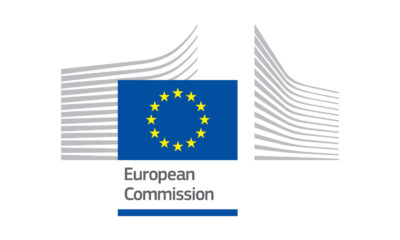Travel
London to New York in 3.5 hours: How Boom Supersonic is learning from Concorde’s mistakes
More than two decades after Europe’s failed attempt at a supersonic airliner, the USA is on track to make it work.
Could all our future planes travel faster than the speed of sound? It’s been more than 20 years since the last supersonic passenger flight took off, but a US company wants to bring it back.
Boom Supersonic, based in Colorado, is developing the world’s first supersonic passenger aircraft since the demise of Concorde. While the full-size aircraft is still a few years away, the company has reached a milestone in the project when it successfully broke the sound barrier with its small-scale test aircraft on Tuesday.
The XB-1, affectionately known as the ‘Baby Boom’, is a one-third-scale demonstrator used to test the technology that Boom will employ in its full-scale aircraft. Yesterday, the XB-1 achieved Mach 1.05 within about 11 minutes of taking off.
“XB-1’s supersonic flight demonstrates that the technology for passenger supersonic flight has arrived,” Boom founder and CEO Blake Scholl said in a statement. “A small band of talented and dedicated engineers has accomplished what previously took governments and billions of dollars”.
The aircraft, which flew for the first time in March, is made almost completely from lightweight carbon fibre. It uses an augmented reality vision system to help with landing, since its long nose and high-angle approach can make it difficult for pilots to see.
“The future of aviation is here and now,” told Amy Marino Spowart, president and CEO of the National Aeronautic Association. “Not only is there hope for faster and better commercial flight, but Boom proves that it can be done sustainably”.
Boom’s Overture airliner will be the first supersonic passenger aircraft in more than two decades. But can it succeed where past efforts to get us travelling faster have failed?
A short history of supersonic passenger planes
Back in the 1950s, everyone was convinced that supersonic was the next big thing in air travel. Having just about mastered the jet engine, the aviation industry was inspired by Chuck Yeager, who was the first to break the sound barrier in 1947. Major manufacturers set about designing a commerical passenger aircraft that could do the same thing.
Boeing, certain that the mighty 747 would be the last subsonic aircraft it produced, began working on the 2707 SST (supersonic transport). Lockheed proposed the L-2000, a supersonic aircraft that could carry 250 passengers. However, neither aircraft went into production.
Just two supersonic passenger planes have ever entered service – the Russian Tupolev Tu-144 and the venerable Anglo-French Concorde. In total, 20 Concordes were built, although only 14 flew in passenger service. Russia built 16 Tu-144s.
The Tu-144 – affectionately known in the industry as the ‘Concordski’ – entered service in 1975 but was retired from passenger service just three years later. Concorde lasted longer, flying from 1976 until 2003.
So, why did aviation give up on supersonic passenger transport so soon?
What was the problem with Concorde?
The appetite for a supersonic passenger plane was strong. By the time Concorde took its first test flight, orders had been received for more than 100 aircraft from dozens of major airlines of the day. Pan Am, American Airlines, BOAC, and Lufthansa were counted among the many carriers keen to fly faster routes.
But even before the aircraft entered service with British Airways and Air France, many of these orders had been cancelled. Three main problems existed with the plane – noise, smoke, and money.
The 1973 stock market crash and an oil crisis in the same year made airlines rather cautious about aircraft that consumed a lot of fuel. Reports suggested that Concorde achieved a per-passenger fuel efficiency of 15.8 mpg (17.8 L/100 km), making it a rather thirsty option.
In comparison, the Boeing 747 would achieve a per-passenger mpg rate of 46.4 (6.1 L/100 km), and the popular Douglas DC-10 managed as high as 53.6 mpg (5.3 L/100 km).
Coupled with the worries about fuel consumption, the noise of Concorde’s sonic boom caused issues that made its planned routes with potential buyers unviable. Complaints of broken windows and cracked plaster from households under the flight path, and even farmers reporting panic amongst livestock, meant Concorde was banned from going supersonic over land.
As a result, the plane was forced to fly subsonic until it got over the open ocean. This meant Concorde’s high-speed routes were mainly focused between Europe and the USA, making the plane less attractive to potential buyers who wanted to operate routes over land.
In the end, only Air France and British Airways ever flew the Concorde. Putting the aircraft into passenger operation presented yet another challenge, however, as the costs to power such a fuel-hungry jet with a modest passenger load of around 100 people made the business case very weak.
In order to make Concorde profitable, both airlines had to charge eye-watering prices for tickets. According to the National Air and Space Museum, British Airways would charge around $12,000 (€11,550) for a round trip between London and New York. Adjusted for inflation, that shakes out to around $66,000 (€63,500) in today’s money.
The companies made a go out of it – just about. Despite the high costs, both airlines managed to sell tickets, with passengers seeing their trip as a ‘once in a lifetime’ opportunity. But the cabin was noisy, smelly, and cramped – hardly a luxury experience for the money.
The death blow came when an Air France Concorde was involved in a fatal crash in 2000. Debris on the runway was blamed for rupturing a tyre, which then punctured one of the fuel tanks. This caused the plane to crash into a nearby hotel, claiming the lives of 113 people.
While both BA and Air France cited high maintenance costs for the retirement of their Concorde fleets in 2003, there were many factors at play. In truth, the market had moved on, and a trend for low-cost flying and more efficient aircraft had made Concorde redundant.
Will Boom Supersonic succeed where Concorde failed?
If you believe the hype, Boom claims to have already dealt with many of the issues that contributed to Concorde’s demise. Noise, cost, and efficiency are high priorities for the company to tackle.
Part of Concorde’s noise profile was a direct result of the engines using afterburners to achieve supersonic flight. Overture will not use afterburners, which should significantly reduce fuel consumption and the associated noise.
For passengers, the cabin is a world away from the cramped, noisy environment on Concorde. Advanced soundproofing measures mean it shouldn’t seem any louder than a conventional jet aircraft, and the company has already floated some designs for its interiors that look suitably luxurious and comfortable.
The company has developed its own engine solution that it says will reduce fuel consumption. These engines are designed to run on 100 per cent sustainable aviation fuel which, although not available at scale yet, would further reduce its environmental impact.
Overture hasn’t quite managed to eliminate the sonic boom effect, but thanks to more optimised aerodynamics, the impact will be reduced significantly. The company promises that Overture will be able to fly over land at Mach 0.94, about 20 per cent faster than subsonic aircraft, without breaking the sound barrier.
For now, the supersonic aircraft would be restricted to breaking the sound barrier over water. Boom says there are more than 600 transoceanic routes on which Overture could provide a supersonic solution without changing current regulations relating to sonic booms.
“Overture was created to achieve optimal performance while meeting our stringent safety and sustainability requirements,” says Boom Supersonic. “We are leveraging more than fifty years of advancements in aerodynamics, materials, and propulsion to build economically and environmentally viable supersonic aeroplanes”.
But what of the market demand? By the end of Concorde’s lifespan, British Airways said it was selling only around half of its available tickets. Air France, still suffering from the tragic crash in 2000, was selling less, only around 35 per cent.
Concorde’s ticket prices were up there in the ultra-luxury category. In contrast, Boom is targeting business travellers, and pricing seats accordingly. Early estimates suggest a round trip Europe to USA ticket for around $5,000 (€4,800), in the ballpark of what passengers pay for business class seats on regular jets today.
“Today, there’s both the market demand and the technology to enable mainstream supersonic travel,” the company says. “Business and leisure travel has continued to grow, and travellers are willing to pay for speed.”
Boom is targeting 2029 for the entry into service of its Overture airliner. It has already had orders for 130 aircraft from multiple global airlines, including American Airlines, United, and Japan Airlines. If it can steer clear of the pitfalls that ended Concorde’s career, supersonic travel may well be back on the cards.
Travel
New Eurostar services will whisk passengers from the UK to cities in Germany and Switzerland
Published on
ADVERTISEMENT
Europe’s rail renaissance is showing no signs of slowing as high-speed rail operator Eurostar reveals ambitious plans to expand its network.
The company says it will introduce direct train connections from London to Germany and Switzerland, in what it calls the dawn of a “new golden age of international sustainable travel”.
The operator is also enhancing its existing offering by increasing services on popular routes.
Here’s what travellers can look forward to.
Eurostar’s proposed expansion includes establishing direct rail links between London St Pancras International and two key European destinations: Frankfurt in Germany and Geneva in Switzerland.
The company plans to invest approximately €2 billion to acquire a substantial fleet of up to 50 new trains for the routes.
These new services are expected to begin operating during the early 2030s and aim to rival air travel for the same trips.
And journey times make the rail alternative attractive. Passengers travelling between London and Frankfurt can expect to arrive in approximately five hours, while those heading to Geneva will make the journey in around five hours and 20 minutes.
Eurostar has not yet released details on intermediate stops and whether passengers will have the flexibility to get on and off at various points along the route.
The new services are particularly aimed at business travel, with Eurostar’s Chief Executive, Gwendoline Cazenave, highlighting that the destinations are “big financial hubs”.
Frankfurt and Geneva are also tourist hotspots, filled with culture, striking architecture and international events.
Dates for the launch remain approximate as there are still several logistical challenges to implementing these new routes.
These include expanding passenger facilities at destination stations, establishing new border control checkpoints, and securing track access agreements.
Despite these hurdles, Cazenave remains optimistic about the project’s success, citing strong commitment from Eurostar, passenger demand, and government support.
Eurostar to increase services along popular routes
Eurostar’s expanded fleet will also enable it to increase frequency on popular routes.
This includes boosting daily return services between London and Paris from 17 to 20.
The company has also confirmed plans to introduce a fourth daily return service between St Pancras and Amsterdam beginning on 9 September, with a fifth service added from mid-December.
Currently, Eurostar operates services connecting London to Paris, Brussels, Amsterdam, and seasonal routes to the French Alps during the winter sports season. It also runs train links within Belgium, France, Germany and the Netherlands.
The operator transported 19.5 million passengers last year – a five per cent increase from 18.6 million in 2023. The London-Paris route proved most popular with 280,000 passengers, followed by London-Brussels with 250,000 passengers.
While Eurostar currently enjoys a monopoly on passenger services through the Channel Tunnel, several competitors are developing plans to challenge this, including Virgin Group, Italy’s FS Italiane Group, and Gemini Trains.
Travel
Norway to introduce tourist tax amid record visitor numbers and overtourism concerns
By Euronews Travel
Published on
ADVERTISEMENT
Norway is set to become the latest European destination to introduce a tourist tax to combat concerns about rising visitor numbers.
Lawmakers approved the new levy on Thursday, which allows municipalities to introduce a 3 per cent tax on overnight stays in “areas particularly affected by tourism”.
The law allows local authorities to apply the tax at their own discretion, and it will be added to accommodation charges. Authorities will also be allowed to adjust the percentage based on the season.
The funds raised by the tax will be used exclusively to improve tourism infrastructure projects that benefit both visitors and local people. Municipalities will have to demonstrate that their facilities are inadequate and have their plans approved by the government to spend the funds.
Cecilie Myrseth, Norway’s minister of trade and industry, said on social media that her government had reached a “historic agreement” to introduce a tourism tax that was “in line with what they have in the rest of Europe”.
The country is the latest in a string of European nations introducing or increasing visitor levies to tackle the growing problem of overtourism. A tax may also be applied to cruise ships that make stops in the country, particularly in areas that are most affected by overtourism.
Norway is experiencing a tourism boom
As tourists increasingly choose cooler, northern European destinations to get away from the heat, Norway has experienced a boom in visitor numbers.
Last year, a record-breaking 38.6 million people booked accommodation in the country. That includes more than 12 million overnight stays by foreign tourists – a 4.2 per cent increase from 2023.
Some previously quiet destinations have been overwhelmed, like the Lofoten islands, where eye-catching images of hiking trails posted on social media have led to an influx of visitors. With a population of 24,500 people distributed across several small towns and villages, keeping up with the cost of all these new visitors has been hard.
A recent survey by industry organisation Norwegian Tourism Partners found that 77 per cent of people in Tromsø, in northern Norway above the Arctic Circle, thought there were too many tourists there. Visitors have been drawn by the Northern Lights, wildlife excursions, Sami cultural experiences and what the city itself has to offer.
The increase in tourism has caused tension with local residents across Norway as infrastructure has struggled to keep up with the boom. Facilities like public toilets and car parks have been overwhelmed in popular destinations.
Some residents have even reported cases of people using their back gardens as toilets, and bemoaned the increased traffic clogging up Norway’s roads.
Travel
Wildfire warnings issued in the Canary Islands as millions prepare to holiday there
ADVERTISEMENT
As millions of holidaymakers prepare to head to the Canary Islands this summer, authorities have issued a wildfire pre-alert across the archipelago.
The warning, announced by the General Directorate of Emergencies on Sunday, applies to tourist hotspots El Hierro, La Palma, La Gomera, Tenerife and Gran Canaria.
It comes as the islands enter a high-risk fire period following the wet season, as hot, dry winds known as the ‘calima’ begin blowing in from the Sahara Desert.
Fires are common, but they haven’t slowed tourism
The risk of wildfire is nothing new for the Canary Islands.
The volcanic terrain, Mediterranean climate and fire-adapted vegetation – plants that have evolved to thrive in fire-prone environments – make them susceptible to summer blazes, and scientists say wildfires are part of the archipelago’s ecological rhythm.
Some of the worst occurred in 2023, when forest fires ravaged Tenerife, destroying more than 15,000 hectares of land and forcing 12,000 people to evacuate. The blaze was later found to have been started by arsonists.
This year, officials are urging tourists and locals alike to take extreme caution, warning against launching fireworks near forests and discarding cigarettes on dry ground.
But even as the fire warnings roll in, the Canaries’ appeal shows no signs of slowing down.
In 2024, the islands welcomed nearly 18 million tourists, including a record-breaking 15.5 million international arrivals. Among them, British travellers led the way, recording 6.3 million visits – up 500,000 from 2023.
Concerns about overtourism mount amid record arrivals
While the Canary Islands continue to attract record numbers of tourists, residents are increasingly voicing concerns about overtourism.
In April 2024, tens of thousands of islanders participated in protests, holding signs that read “the Canary Islands have a limit” while rallying against rising housing costs, environmental damage and the strain on public services.
Over Easter this year, about 80,000 hospitality workers in Tenerife, La Palma, La Gomera and El Hierrowalked out in a dispute with unions over pay.
The surge in short-term rentals has been especially contentious. Locals have reported getting priced out of their neighbourhoods as properties are converted into holiday lets, the cost of living soars and wages stagnate.
Despite these concerns, tourism remains a significant part of the Canary Islands’ economy, accounting for approximately 35 per cent of its GDP.
Tenerife still reigns supreme
After welcoming seven million tourists in 2024, Tenerife remains the most visited island.
Its year-round sunshine and wide beaches keep it a firm favourite among families, especially during the UK’s summer school break and throughout the winter months.
As the peak summer season picks up, local tourism boards have made no indication that the fire pre-alerts will disrupt travel plans.
But authorities remain focused on prevention this year.
More than 2,000 firefighters are on standby. Meanwhile, the government has distributed detailed safety advice, urging people to prepare a go-bag, stay informed and follow emergency evacuation or shelter-in-place instructions if fires erupt.
-

 Sports6 days ago
Sports6 days agoMarc Marquez wants to make no more mistakes and heralds news
-
Travel7 days ago
Hikers ignored warnings before Mount Etna’s latest eruption, Sicilian officials say
-
Travel5 days ago
Norway to introduce tourist tax amid record visitor numbers and overtourism concerns
-

 EU & the World6 days ago
EU & the World6 days agoWhat Time Does ‘Ginny & Georgia’ Come Out? Season 3 Premiere
-

 EU & the World6 days ago
EU & the World6 days ago16 Beachy, Breezy, and Bride-Approved Gifts for Summer Brides-to-Be
-

 Politics6 days ago
Politics6 days agoEU will support raw materials projects outside the EU
-

 Sports6 days ago
Sports6 days agoMarc Marquez no longer wants to make mistakes and heralds change
-

 EU & the World4 days ago
EU & the World4 days agoNovak Djokovic’s Wife: All About His Romance With Jelena Djokovic









